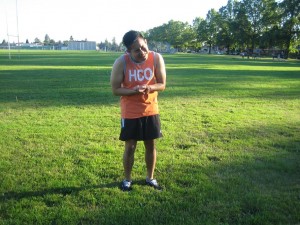Fire ant stings are very dangerous especially if allergic to them. Colonies of fire ants are hard to destroy. Fire ants can be red-brown to black in color and grows up to ¼ inch long. Their nest or mounds is about 1 foot high and usually they can be found in grassy areas such as pastures and lawn.
Fire ants becomes aggressive when their nest or mounds is disturbed. If they are provoked, they will swarm on the intruder and attaches themselves by biting to keep them stable and will sting repeatedly and inject toxin alkaloid venom into the skin called solenopsin.
Symptoms of fire ant sting
- Swelling and pain in the affected area
- Tightness in the chest and difficulties with breathing
- Hives, swelling and itching
Apply cold compress to the area to lessen the swelling and the itchiness. - Nausea, vomiting and diarrhea
- Swelling of the throat, lips, and tongue or swallowing difficulties
- Anaphylactic shock which result to blacking out, dizziness and cardiac arrest which needs to be treated immediately.
Treatment
- Move away from the area as quickly as possible.
- Fire ants are difficult to remove when they are clamped into the skin with their mandibles. Pick them one at a time very quickly and drop them on the ground. Avoid slapping the ants to prevent making them more aggressive and sting more.
- Clean the affected area using soapy water to remove venom left in the skin and also dirt and debris to prevent development of infections. Use a mild antiseptic soap. Pat dry the area using a towel and then moisturize the skin by applying olive oil.
- Hold the affected area in elevated position to lessen the swelling.
- Apply cold compress to the area to lessen the swelling and the itchiness. Put ice cubes in plastic bag. Wrap it in towel before placing to the area for at least 5 minutes at a time on the first 24 hours. Avoid ice directly on the skin to prevent further irritation and worsen the condition. Another alternative is running the stinged area under cool running water for at least a few minutes is also good for the condition.
- Take the prescribed over-the-counter antihistamines or hydrocortisone cream to lessen the itchiness and the pain.
- Avoid popping the blisters to prevent development of infections. If the blisters breaks, clean the affected area using antibacterial soap. Check for signs of infections such as draining pus and becomes discolored.
- Make a paste by mixing 1 teaspoon of baking soda with a few drops of water. Mix them well until it becomes the consistency of a paste. Apply it directly to the area and leave it on for at least 10 minutes to lessen the itching and the risk of developing infection and rinse it off using lukewarm water.

